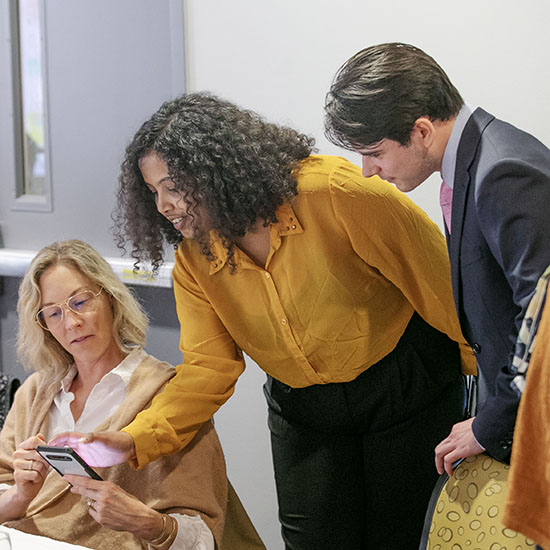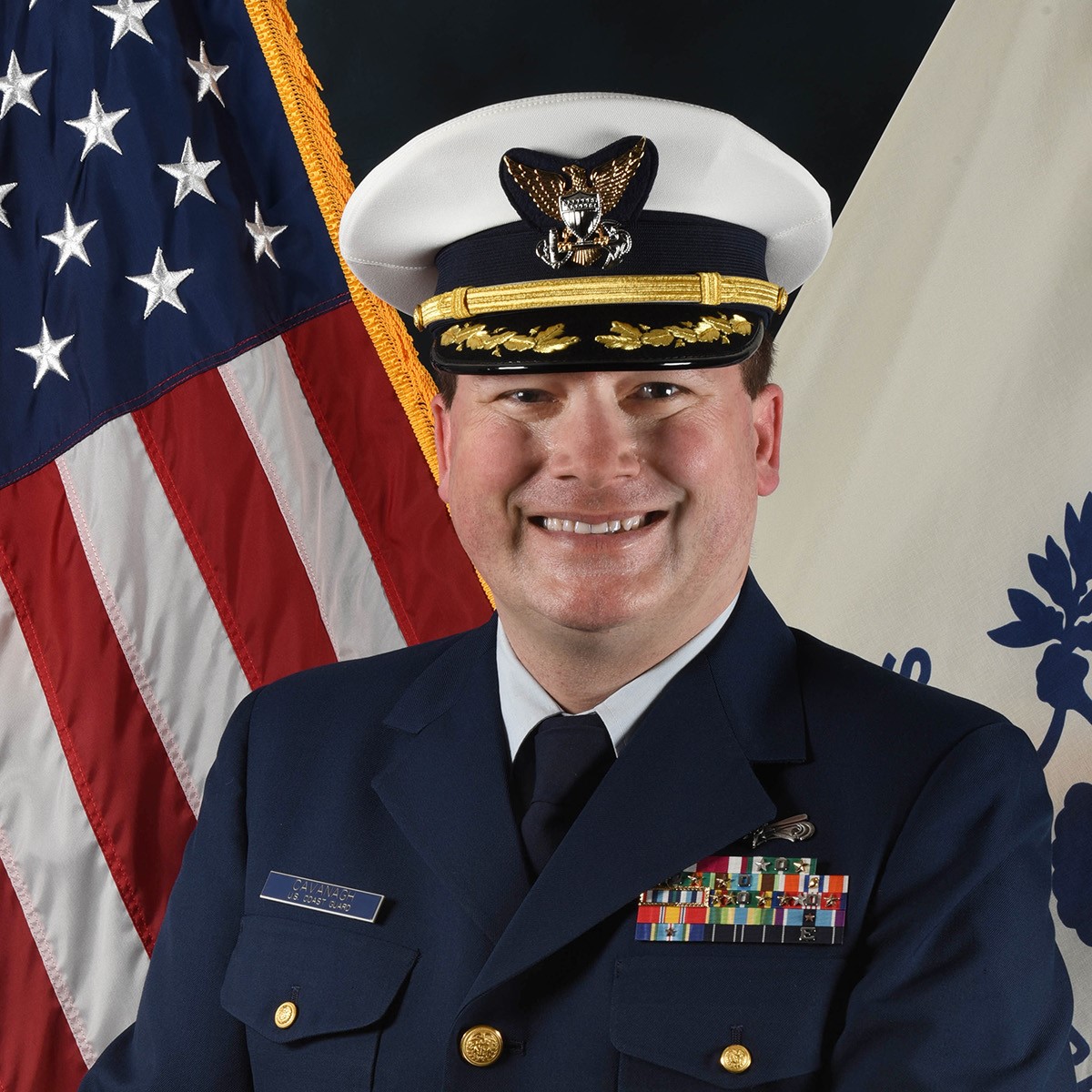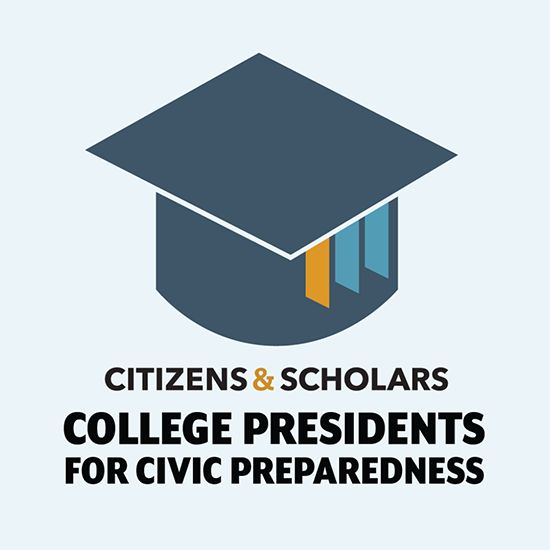Oceanography grant from NASA
Last winter, using NSF grants, Skidmore geosciences professor Meg Estapa joined a Pacific Ocean research cruise with fellow scientists from NASA and other organizations. [details, videos, more] Now Estapa has received more than $1.7 million in NASA funding for a three-year project building on her earlier work.
Why does a space agency care about oceans? Because sea and sky are close partners in climate regulation. Throughout the Earth’s oceans, the photosynthesis conducted inside billions of tons of tiny algae (as well as larger marine plants) uses atmospheric carbon, and when those algae die and sink, they take that carbon with them, keeping it out of the atmosphere. It’s the details of this “carbon pump” that scientists are seeking to understand: which types of algae and other particles sink faster or slower? what about currents or weather changes? and dozens of other variables.
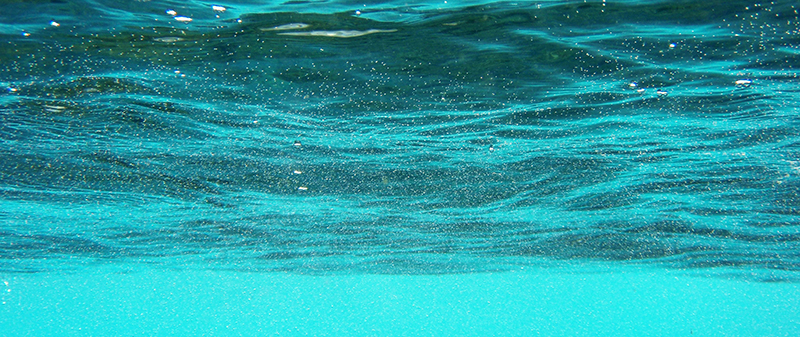
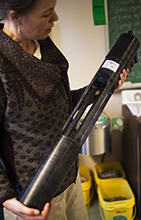
Estapa with one type of open-
ocean sediment trap
Among Estapa’s specialties in this field is the technology of sampling and analysis. She has worked with surface-tethered and free-floating buoyant traps, some that collect sediment particles in sieves and some that catch them with sticky gels, some that have optical analyzers and some with transmitters for sending location and other data . . . Along with deploying and retrieving the sampling equipment in particular depths and ocean areas, her research includes collecting the samples for chemical and biological analysis to assess how much carbon the sinking particles contain, what species they represent, and more. A key goal is to compare her sampling data to information from earth-observing satellites, currently “the only way to get a global view of these processes over time spans of decades,” she says.
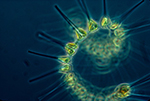
An alga, much enlarged
This kind of science, she emphasizes, requires interdisciplinary and team collaboration that embraces geology, physics, biology, and chemistry. And her study—one of 11 chosen by NASA as part of its EXPORTS oceanographic fieldwork—is exactly such a collaborative effort. Along with the Skidmore grant, the project includes sub-awards to the Woods Hole Oceanographic Institution, the Moss Landing Marine Laboratories at San Jose State University, and the University of Rhode Island. Estapa is principal investigator, but all the scientists will integrate their efforts, exchange data, coordinate their analyses—and share with their students.
